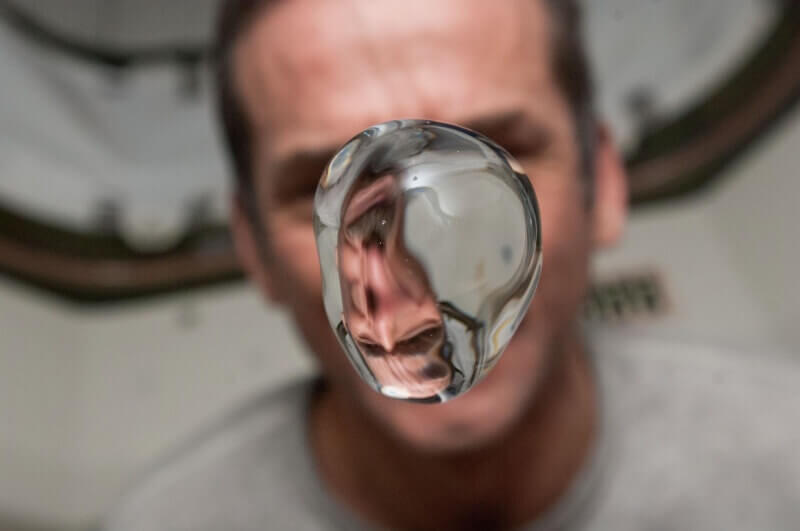Can astronauts cry in space? Do tears well in their eyes and trickle down their cheeks like it does on Earth? One question that’s asked often is how, if at all, do astronauts cry in space.
Have you ever heard the phrase “there’s no crying in baseball”? Well, now there’s a new phrase, “there’s no crying in space”.
The phrase “there’s no crying in baseball” was a metaphor used to teach someone to toughen up and not to cry when something doesn’t go their way. In space, on the other hand, it has a totally different meaning. Astronauts aboard the International Space Station (ISS) are a particularly brave bunch, but that doesn’t mean they don’t get emotional. Surveying the vastness of space and how little Earth is in comparison can spark an emotion or two warranting tears. So, what happens when an astronaut cries?
Crying in Space: Astronauts and Tears
The short answer is yes, astronauts can cry in space, but their tears don’t fall. Instead, they crash around in spherical shapes. Tears are formed in the lachrymal glands, an almond-shaped gland in our eyes. The lachrymal glands produce a thin aqueous layer over the eye to keep it moist, but these glands are also the source of tears. Unless one of the astronauts aboard the ISS is suffering from a clinical condition, nothing is stopping them or their body from shedding a tear or two. After all, the emotional impact of being in outer space is significant.
What Happens When Astronauts Cry In Space?
Astronauts can cry in space, but their tears don’t fall; they crash around us. Unlike Earth, the ISS has no gravity because they’re in space. This means the cup sitting on your desk or the forks sitting loose in the kitchen drawer would otherwise be floating around the ISS if they weren’t strapped down. This also goes for the liquid inside the cup.
Liquids take the shape of whatever container we put them in, but in a no-gravity space, the molecules float around in their unregulated, free state. When an astronaut cries, their tears don’t roll down their cheeks like they would for us on Earth.
Surface tension in liquids, like tears, cause molecules on the surface to pull each other in. Without gravity to pull the liquids down, they form small, tight spheres. The tears will ball around your eyes and cheeks before having to be wiped away.
Andrew Feustel, an American astronaut, was floating around in space on the side of the ISS when suddenly a flake of anti-fogging solution got stuck in his eye. He was stuck in his space suit, unable to rub the solution out of his eye. Thankfully, he found a solution quickly by using a small sponge mounted inside his helmet. Usually, these sponges are used to plug an astronaut’s nose during pressure readjustment procedures. If that sponge hadn’t been there, though, Feustel could have found himself on the side of the ISS for a long time with a ball of tears impairing his vision.
Conclusion
All in all, yes, astronauts can cry in space, but the tears can often impair vision by sticking around or floating off in the zero gravity environment. Gravity on Earth ensures that when we cry, the tears roll down our cheeks and don’t stick around for the show.

